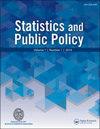The Contagion of Mass Shootings: The Interdependence of Large-Scale Massacres and Mass Media Coverage
IF 1.5
Q2 SOCIAL SCIENCES, MATHEMATICAL METHODS
引用次数: 11
Abstract
ABSTRACT Mass public shootings have generated significant levels of fear in the recent years, with many observers criticizing the media for fostering a moral panic, if not an actual rise in the frequency of such attacks. Scholarly research suggests that the media can potentially impact the prevalence of mass shootings in two respects: (i) some individuals may be inspired to mimic the actions of highly publicized offenders; and (ii) a more general contagion process may manifest as a temporary increase in the likelihood of shootings associated with a triggering event. In this study of mass shootings since 2000, we focus on short-term contagion, rather than imitation that can traverse years. Specifically, after highlighting the sequencing of news coverage prior and subsequent to mass shootings, we apply multivariate point process models to disentangle the correlated incidence of mass public shootings and news coverage of such events. The findings suggest that mass public shootings have a strong effect on the level of news reporting, but that news reporting on the topic has little impact, at least in the relative short-term, on the subsequent prevalence of mass shootings. Finally, the results appear to rule out the presence of strong self-excitation of mass shootings, placing clear limits on generalized short-term contagion effects. Supplementary files for this article are available online.大规模枪击的传染:大规模枪击与媒体报道的相互依存
摘要近年来,大规模公共枪击事件引发了极大的恐惧,许多观察人士批评媒体助长了道德恐慌,如果不是这种袭击频率的实际上升的话。学术研究表明,媒体可能在两个方面影响大规模枪击事件的流行:(i)一些人可能会受到启发,模仿备受关注的罪犯的行为;以及(ii)更普遍的传染过程可能表现为与触发事件相关的枪击可能性的暂时增加。在这项关于2000年以来大规模枪击事件的研究中,我们关注的是短期传染,而不是可能持续数年的模仿。具体而言,在强调大规模枪击事件前后新闻报道的顺序后,我们应用多变量点过程模型来理清大规模公共枪击事件的相关发生率和此类事件的新闻报道。研究结果表明,大规模公共枪击事件对新闻报道水平有很大影响,但有关该主题的新闻报道对随后大规模枪击事件的流行率几乎没有影响,至少在相对短期内是这样。最后,研究结果似乎排除了大规模枪击事件存在强烈的自我激励,明确限制了普遍的短期传染效应。本文的补充文件可在线获取。
本文章由计算机程序翻译,如有差异,请以英文原文为准。
求助全文
约1分钟内获得全文
求助全文
来源期刊

Statistics and Public Policy
SOCIAL SCIENCES, MATHEMATICAL METHODS-
CiteScore
3.20
自引率
6.20%
发文量
13
审稿时长
32 weeks
 求助内容:
求助内容: 应助结果提醒方式:
应助结果提醒方式:


